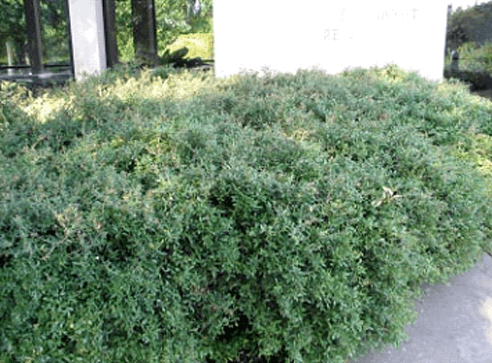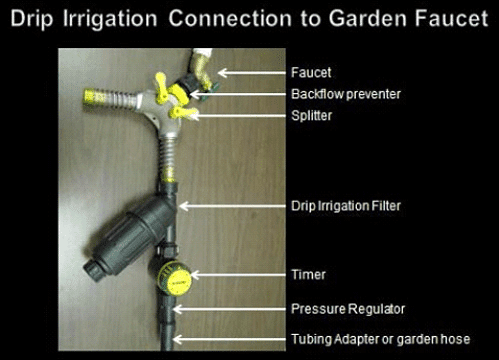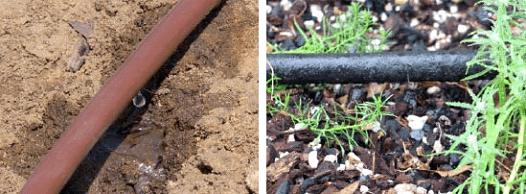Source: Dotty Woodson, Water Resource Program Specialist, Texas A&M AgriLife Extension Service
While the drought conditions that plague Texas have taken a toll on crops, cattle and landscapes, extended dry periods may also cause shifting or cracking in the foundation of homes. When expansive clay soil becomes extremely dry, the soil contracts and the foundation sinks. Unfortunately, when the foundation sinks, it sometimes sinks in different directions causing cracks. When soil is wet again, clay soil expands and lifts the foundation sometimes closing the crack. Many notice this shifting when doors are difficult to open and close or when you see cracks in walls particularly the corners. More extreme damage occurs when a foundation crack causes pipes to break, chimneys to shift and brick veneer to crack or separate. Try to protect your foundation before this happens by watering foundation when the soil dries out due to lack of rainfall and high temperatures.
Since dry soil shrinks away from foundations, walk around your house and look where the soil is against the foundation. You may have to pull back plants or even mulch to make this observation. If you do not see a gap between the soil and foundation, your soil moisture is good. If you see a gap between the foundation and the soil, you need to water the ground around your foundation until the soil swells and closes the gap.

Gap between foundation and soil
There are several suggestions for keeping the clay from drying and shrinking away from your foundation:
- Plant, grow and water plants around the foundation
- Create a dedicated irrigation zone around the house for watering foundation using drip irrigation which may be exempt during water restrictions
- Water the foundation by attaching drip irrigation or soaker hose to an outdoor faucet with a timer
1. Plant, grow and water plants around the foundation
Plants growing around the foundation of your house will protect the foundation by holding the soil and moderating the temperature of the soil. Plant roots hold the soil and keep the soil from eroding away from the house. Plants shade the soil therefore keeping the hot summer sun from evaporating water from the soil. Plants transpire moisture into the air from the leaves of the plants creating a cooling effect. Of course, plants require water to stay alive and thrive. When drought restrictions are limiting the number of times you are allowed to irrigate, you must make sure you are watering the most efficient way possible to take advantage of the limited irrigation time. Check your sprinklers to make sure each one is working properly. Set your irrigation controller to water several short cycles instead of one long cycle. This is called ‘cycle and soak’ irrigation method. See instruction in the irrigation controller manual or call the manufacturer for instructions. Maintain a 2 to 4 inch layer of mulch under the shrubs. Mulch will prevent evaporation of moisture form the soil and allow irrigation and rainfall to enter the soil more efficiently. Do not pile up mulch onto the foundation. You always want to be able to check for soil separation and termite tunnels. You want to be able to see the foundation where it meets your siding or brick facing.

Dwarf Yaupon Holly planted around foundation
2. Create a dedicated irrigation zone around the house for watering foundation
If you have an irrigation system, create a dedicated irrigation zone for your foundation. Install a drip irrigation zone about 8 to 18 inches from the foundation. If water restrictions ever go to ‘no outdoor watering,’ some cities allow will allow foundation watering. Check your city’s ‘Drought and Water Emergency Plans’ to see what form of foundation watering they will allow. This is particularly important in areas where there is no planting to help hold the moisture in the soil.
3. Water the foundation by attaching drip irrigation or soaker hose to an outdoor faucet with a timer
Option 1 – If you do not have an irrigation system, protect your foundation by installing drip irrigation or soaker hose around the foundation by connecting to your outdoor faucet. Drip irrigation is available at large hardware stores, irrigation supply businesses and some garden centers. Drip irrigation works under low pressure so a pressure reducer is required when attaching to a faucet. Make sure you have a backflow preventer on the faucet. Most new homes have backflow preventers on all outdoor faucets. A backflow preventer prevents water from backing into the house pipes if there is a huge pressure draw in the house while the drip irrigation is running. Attach a faucet splitter on the faucet so the faucet is not tired up just for irrigation. Drip irrigation also requires a drip irrigation filter. Add a timer for connivance. There are several drip irrigation timers available that are battery powered for setting a day of week, time of day to start and runtime. There are faucet timers available. Faucet timers only turn the water off. You have to turn the water on and set the timer. Attach a splitter so the faucet can also be used for a garden hose. (see picture) Place the tubing 8 to 18 inches from the foundation.

An example of how to attach drip irrigation to outdoor faucet
Option 2 – Soaker hoses are also available to water foundations. Place the soaker hose around the perimeter of the house 8 to 18 inches away from the foundation. Before attaching the soaker hose to the faucet, make sure you have a backflow preventer on the faucet. The first time you run the soaker hose, take off the end cap and run water through the hose to clean out any debris. Soaker hose run best with low pressure. You do not need to turn the faucet on full blast. Most soaker hoses will have a pressure restrictor (looks like a plastic disc) at the faucet end to prevent high pressure blowing geysers in the hose. If there is no restrictor, turn on the faucet so water slowly comes out of the soaker hose. Run the soaker hose for several hours.

Watering Foundation with Soaker Hose
If you find cracks in the foundation, fill with foundation waterproofing, which is available in most hardware stores. Cracks also may appear in the concrete of a driveway, carport or garage. If there are cracks in the garage, you can usually assume that the cracks do not end there, but extend through the house.

Recent Comments